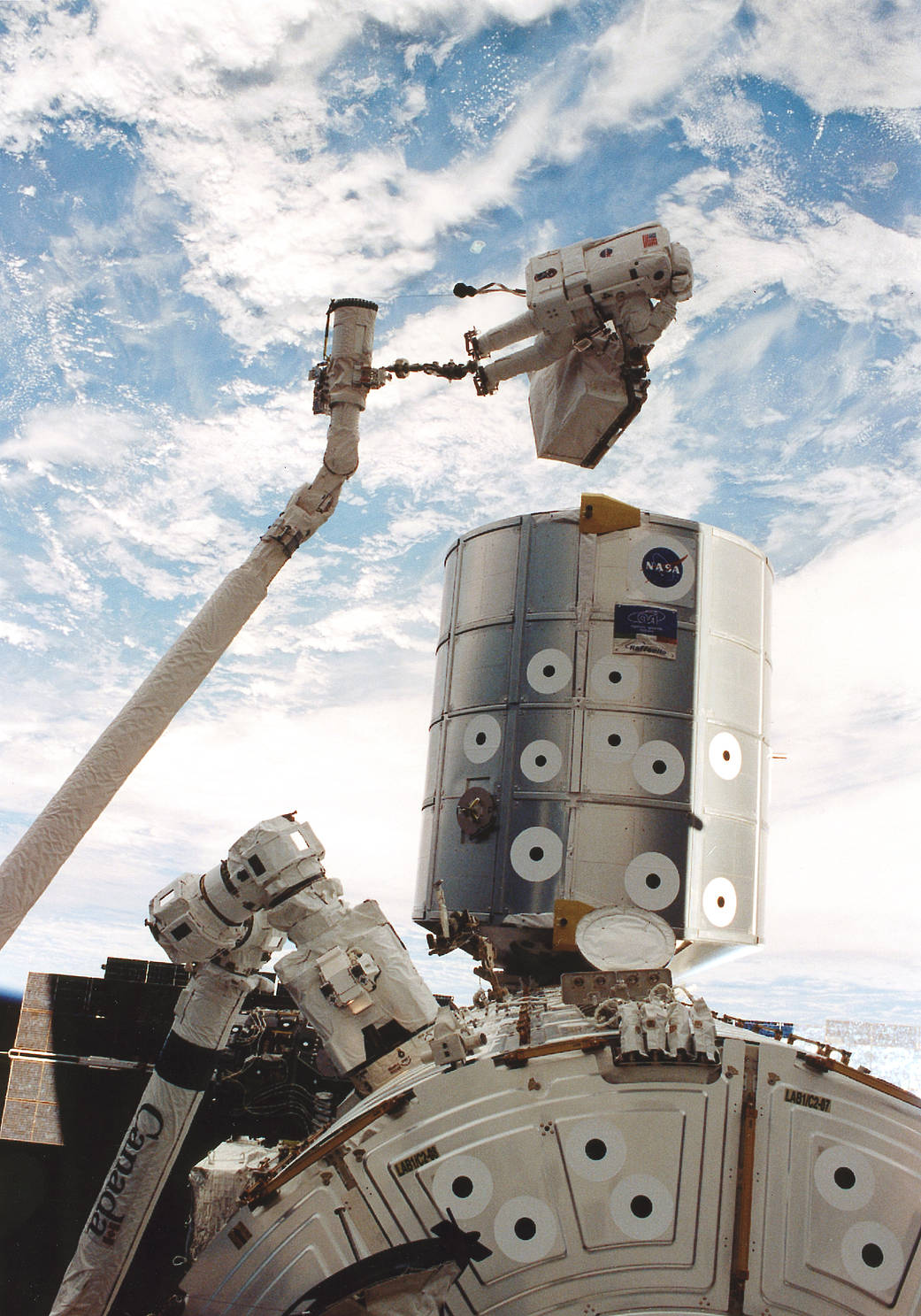This week in 2001, space shuttle Endeavour and STS-100 returned to Earth after a successful 11-day assembly mission to the International Space Station. The main objective of the mission was to deliver and install the Canadian-built Space Station Remote Manipulator System, or Canadarm2. In this photograph, NASA astronaut Scott Parazynski works on the station while anchored to Canadarm2. The first shuttle mission launched in April 1981, and for the next 30 years the program’s five spacecraft carried people into orbit repeatedly, launched, recovered and repaired satellites, conducted cutting-edge research and built the space station — the largest structure in space. Today, NASA Marshall Space Flight Center’s Payload Operations Integration Center serves as “science central” for the space station, working 24/7, 365 days a year in support of the orbiting laboratory’s scientific experiments. The NASA History Program is responsible for generating, disseminating, and preserving NASA’s remarkable history and providing a comprehensive understanding of the institutional, cultural, social, political, economic, technological, and scientific aspects of NASA’s activities in aeronautics and space. For more pictures like this one and to connect to NASA’s history, visit the Marshall History Program’s webpage. (NASA)
1 min read

























